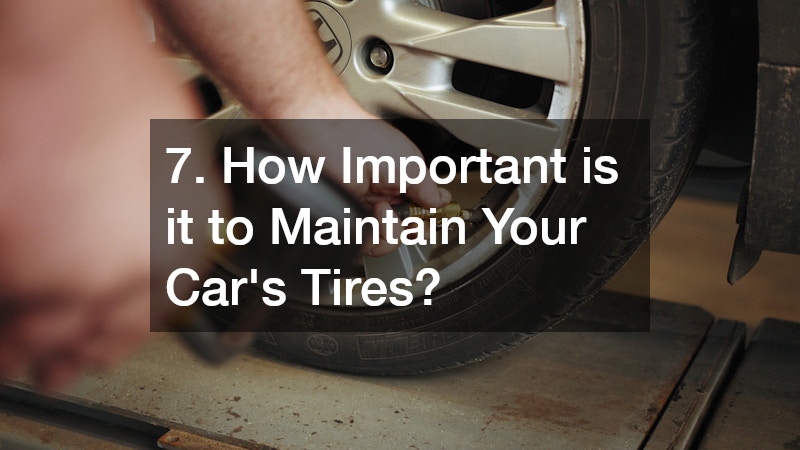Understanding how to maintain your car’s body not only preserves its aesthetic appeal but also enhances its resale value. Regular car body maintenance is crucial in keeping your vehicle looking its best and running efficiently. This article delves into key maintenance tips that mechanics emphasize for long-term care, tackling everything from exterior upkeep to interior preservation.
1. How Often Should You Wash Your Car?

Washing your car is an essential aspect of car body maintenance. Normally, it’s recommended that you wash your car every two weeks to prevent the build-up of dirt and grime that can damage the paintwork. This practice of regular washing helps in avoiding frequent visits to the auto body repair shop for major paint touch-ups.
In regions with harsher climates or areas with heavy pollution, washing your car weekly can be more beneficial. Countless factors, like road salt accumulation during winter months, can rapidly corrode the exterior. By adopting this routine, not only do you maintain your car’s appearance, but you also prolong its lifespan significantly.
Moreover, always ensure the products used in the washing process are car-friendly. Harsh detergents and brushes can scratch your car’s paint, leading to expensive repairs and restoration. These preventive measures are what car body maintenance is all about: saving you from frequent collision repair issues in the future.
In addition to exterior cleaning, don’t overlook the undercarriage. Dirt, mud, and salt can collect beneath the vehicle and cause rust or corrosion over time. Using a pressure washer or visiting a professional car wash with an underbody spray feature can help remove buildup from hard-to-reach areas. Also, waxing your vehicle every few months provides a protective barrier against UV rays, rain, and contaminants. Taking these extra steps keeps your car looking new and structurally sound for years to come.
2. What is the Best Time to Wax Your Car?
Waxing is vital in the realm of car body maintenance, providing a protective layer to your vehicle’s paint surface. Ideally, waxing your car every three months helps in maintaining its shiny look while acting as a defense against pollutants and UV rays. During each waxing session, ensure the car is clean and, if possible, wax it in a shaded area to avoid the sun’s direct heat.
While waxing, you also protect your car against minor cosmetic scratches, which often happen. The protective layer created by wax reduces the chance of paint cracking, thus saving you from brake repair bills in case of minor collisions. It’s all about finding the right balance between aesthetic appeal and functional care.
For the dedicated car owner, considering a professional detailing service once or twice a year can significantly enhance the paintwork protection. Visit professionals who specialize in rust prevention and car body maintenance. With proper care, your car will look and feel as good as new, irrespective of its age or mileage.
In addition to regular waxing, using a high-quality sealant can further extend your car’s protection. Sealants bond chemically with the paint, offering longer-lasting coverage against harsh elements like acid rain and road debris. Pay attention to the type of wax you choose—carnauba wax gives a deep, natural shine, while synthetic waxes provide more durability. Keeping your car covered or parked in a garage when possible also helps preserve the wax layer. Over time, these small steps can prevent oxidation, fading, and costly paint restoration.
3. How Can You Protect Your Car’s Paint from Fading?
The integrity of your car’s paintwork represents the dedication to car body maintenance. One effective method of preventing paint from fading is parking your vehicle under carports. Prolonged exposure to sunlight is one of the primary causes of fading paint, and taking preventive actions like this can save you from costly repairs.
Furthermore, investing in high-quality car covers that offer UV protection is a prudent choice. These covers can safeguard the paint from the sun’s harmful rays and other environmental elements, effectively reducing the need for collision repair in the future. Alongside these measures, regular waxing forms an additional protective shield.
Additionally, polishing your vehicle can rejuvenate its shine and bolster protection against fading. This should be part of a routine car body maintenance program for anyone keen on maintaining their car’s exterior. Attention to detail in these areas is key to long-lasting results and impressive visual appeal.
Beyond these measures, it’s wise to wash your vehicle using pH-balanced car shampoos that are gentle on paint. Avoid using abrasive sponges or household detergents, as they can strip away protective layers. You can also consider applying a ceramic coating for advanced, long-term protection against UV rays, water spots, and oxidation. For vehicles frequently parked outdoors, scheduling seasonal detailing sessions helps keep the paint vibrant and resistant to environmental wear. Consistent upkeep not only preserves aesthetics but also sustains your car’s resale value.
4. What Are Effective Methods for Removing Scratches?

Scratches are a common challenge faced in car body maintenance, and their removal can significantly improve your car’s appearance. For minor scratches and swirls, using a scratch remover solution and a microfiber cloth can work wonders. These products gently buff out the imperfections without causing further damage to your vehicle’s surface.
In more severe cases, involving deeper scratches, it may be necessary to use a colored scratch remover that matches your paint. This allows for better blending, making these scratches less noticeable. For those uncertain about DIY solutions, professional hail damage repair services can efficiently address and resolve such issues.
Remember that early action is key. Addressing scratches quickly prevents rust from forming, especially in case the scratch exposes the metal beneath the paint. Regular inspections and quick fixes form a crucial part of proactive car body maintenance, saving you from more substantial headaches down the road.
5. How Do You Guard Against Rust on Your Car?
Preventing rust is a cornerstone of car body maintenance, as once it sets in, it can rapidly spread and damage the vehicle. A simple way to guard against rust is by frequently washing and waxing your car, focusing especially on areas prone to moisture accumulation, such as wheel wells and undercarriage.
Additionally, keeping an eye out for minor dents and scratches is vital as they can serve as gateways for rust. Repairing these promptly, either through a DIY approach or professional touch-ups, can halt potential issues. Interestingly, using a rust inhibitor spray is also highly effective for added protection.
Should rust develop despite these efforts, considering a junk car recycling service might be in your future. This extreme measure ensures the problematic parts don’t affect the rest of your vehicle. Consistent vigilance and timely intervention can protect your investment and maintain its value.
6. How Can You Deal with Dent Repairs at Home?
Dent repairs are an occasional necessity in car body maintenance, often manageable at home with the right tools. A popular method includes using a plunger to create suction and pull out shallow dents effectively. This process works remarkably well on smooth, flat surfaces.
Another at-home fix involves using a hairdryer and compressed air. Heat the dent with the dryer for a few minutes and follow it by spraying with compressed air. This temperature variation can help pop the dent back in place naturally.
More complex dents would require professional attention, especially those that result from severe impacts. Before heading for professional help, inspect if DIY methods can resolve minor issues. This approach in car body maintenance optimizes both time and finances, allowing resources to only address critical repairs.
7. How Important is it to Maintain Your Car’s Tires?

Tire maintenance is as imperative as any other aspect of car body maintenance. Regularly checking tire pressure and ensuring they are inflated correctly prevents uneven wear and possible blowouts. This care extends the life of the tires and improves your car’s fuel efficiency.
Rotating your tires every 5,000 to 7,000 miles contributes to even tread wear, enhancing safety and performance. It’s a small step that can substantially increase your car’s longevity and driving experience. Skipping this step can attract increased costs by necessitating more frequent tire replacements and even involve local accident lawyers if overlooked safety leads to incidents.
Moreover, inspect your tires for visible wear patterns like balding or unnatural surface damage. Addressing such anomalies ensures you’re conducting thorough car body maintenance, steering clear of more extensive repairs down the road. Customary checkups can prevent emergency use of a tow truck or the use of trailer hitches due to tire failure.
8. Why Should You Pay Attention to Car Seals and Rubbers?
Seals and rubbers in your car play a significant role in ensuring a smooth, quiet ride and keeping out the elements. Over time, these components can degrade, compromising your car’s insulation against water and noise, making car body maintenance essential. Inspect these for cracks, splits, or signs of wear, particularly after extreme weather conditions.
Maintaining your car’s seals can also prevent rust by stopping water from entering parts of your vehicle that it shouldn’t. Lubricating seals with specialized silicone-based products enhances their longevity. These efforts ensure that the vehicle interior remains dry and comfortable, eliminating unnecessary future costs.
Consistent attention to detail in this area of car body maintenance keeps maintenance costs low and vehicle efficiency high. More so, well-maintained seals contribute to maintaining your car’s resale value, which can be an appealing factor when considering future trade-ins or sales.
9. How Do You Maintain Your Car’s Windows and Mirrors?
Windows and mirrors are significant components of car body maintenance, affecting both aesthetics and safety. Regular cleaning using appropriate glass cleaners ensures optimal visibility, preventing road hazards. It’s suggested to spend some extra effort on cleaning mirrors and windows after each car wash for clarity and performance.
If a crack or chip appears in the windshield or windows, addressing it promptly can prevent the damage from spreading. Early attention can save you from potential window replacements and costly repairs. A skilled towing service might even offer mobile repair solutions, preventing journey disruptions.
Applying water repellent products on car windows is another wise step, improving visibility during adverse weather conditions. These preventive measures lend your car a sophisticated look under car body maintenance strategies while boosting safety for you and your passengers.
10. What Are the Best Practices for Car Interior Maintenance?

Preserving the car’s interior contributes significantly to its overall condition and value. Begin with routine vacuuming to eliminate dust and debris from seats, floors, and other surfaces. This prevents premature wear and tear and keeps the inside fresh and pleasant.
Investing in protective interior accessories like seat covers and durable floor mats offers an additional layer of protection. These not only prevent stains and damage in heavily used areas but also make cleaning during regular car body maintenance much simpler. This foresight substantially preserves your car’s interior quality over time.
Additionally, routinely check for any loose or broken components inside the vehicle, such as knobs, handles, or electrical features. Repairing these promptly under car body maintenance guidelines saves time and possible electrical complications. These practices ensure a comfortable and functional driving environment, showcasing care and detail that potential buyers or passengers will appreciate.
Using These Car Body Maintenance Tips
Regular maintenance of your car’s body ensures it remains in top condition, both mechanically and aesthetically. By following these tips, you extend the life of your vehicle and preserve its value over time. Across all these maintenance efforts, consistent awareness and timely intervention protect your investment, allowing you to enjoy your vehicle’s full potential without perpetual repairs.
Car body maintenance cultivates car longevity and aesthetic beauty, establishing it as a priority for every car owner. From understanding the right time to wash and wax to addressing more challenging issues like scratch removal and rust prevention, each step contributes meaningfully. By integrating these practices into your maintenance routine, you safeguard not only your car’s current brilliance but also its market value.
We hope this detailed guide aids you in your car body maintenance efforts, enabling peace of mind and an enhanced driving experience. Whether you’re engaging in meticulous interior care or ensuring exterior resilience, every effort counts in crafting a vehicle that stands out for years to come.

